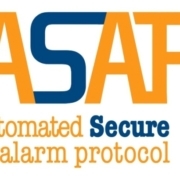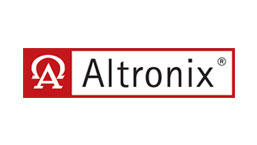 The month of May has been a busy month for the Automated Secure Alarm Protocol (ASAP) program. Efforts are underway to migrate all Nlets directly connected alarm monitoring companies to the new Central Station Alarm Association (CSAA) managed Message Broker. In concert with this effort, CAD providers that have an ASAP interface solution have been upgrading their ASAP software applications to the 3.3 schema. Couple these efforts with new added security between the Message Broker and the Nlets Message Switch, three new CAD providers testing their ASAP interface solution, one new alarm automation provider testing its solution and the first of the next five alarm companies to join the ASAP program becoming connected to the Message Broker, and it has been a busy month indeed.
The month of May has been a busy month for the Automated Secure Alarm Protocol (ASAP) program. Efforts are underway to migrate all Nlets directly connected alarm monitoring companies to the new Central Station Alarm Association (CSAA) managed Message Broker. In concert with this effort, CAD providers that have an ASAP interface solution have been upgrading their ASAP software applications to the 3.3 schema. Couple these efforts with new added security between the Message Broker and the Nlets Message Switch, three new CAD providers testing their ASAP interface solution, one new alarm automation provider testing its solution and the first of the next five alarm companies to join the ASAP program becoming connected to the Message Broker, and it has been a busy month indeed.
The ASAP ANSI standard is a one-size-fits-all solution: It is no secret that the ASAP to the PSAP program works well for the Houston Emergency Center (HEC), reported to be the fourth largest PSAP in the United States. It’s responsible for providing public safety communications to 2.3 million residents over an area of 634 square miles. Houston is a huge metropolis, so large that someone driving a vehicle could start from one end point on the interstate on the edge of Houston and continue to drive and still be in Houston one hour later. The HEC receives 2,600 police-related alarms weekly and 13% require no calltaker involvement because of ASAP. As more alarm companies begin their participation, this percentage will increase, and fewer alarm notifications will require calltaker involvement. Houston is preparing to begin accepting fire and medical alarms via the ASAP program in June.
The ASAP standard works well for the City of Richmond Virginia, a medium-size PSAP about one-tenth the size of Houston in both population (204,751) and land area (63 square miles). Richmond averages 250 alarms (police, fire and medical) weekly. Approximately 18% of these alarms are received via the ASAP program. Like Houston, this percentage will increase as more alarm companies are added to the program including the long-awaited, granddaddy of the alarm industry: ADT.
The ASAP program works for large cities/counties, medium-size cities/counties and small towns. Like Houston, the ASAP program will work for New York City; Chicago; Los Angeles; San Diego; Washington, D.C.; Boston; Dallas; Fairfax County, Va.; Atlanta; San Antonio; Denver; and so on. Like Richmond, it will work for Norfolk, Newport News, Charlotte, Virginia Beach, Savannah, Charleston, Portland, etc. ASAP to the PSAP can work for a one position 9-1-1 PSAP that receives only one alarm a day or perhaps only one a week. Many of the cities and counties mentioned above are actively working with their CAD providers to acquire an interface to receive the ASAP traffic.
The ASAP is an American National Standard that is not vendor specific or proprietary. It is based on open standards using the Extensible Markup Language and conforms to the National Information Exchange Model (NIEM). CAD providers and alarm monitoring automation providers need only develop the ASAP interface once and deploy it many times to their customers.
Some determining factors if the ASAP program will work for your agency (now or later): The logistics of the ASAP program requires that the PSAP have a CAD system capable of interfacing to the Nlets state control point. Typically, the transport path for alarm notifications is (1) alarm monitoring company sends to (2) CSAA Message Broker sends to (3) Nlets sends to (4) state control point sends to (5) PSAP’s CAD system. Responses from the CAD system to the alarm monitoring company use the reverse route. The travel time from the alarm monitoring company to the PSAP has been benchmarked in the 2 – 5 seconds range. This means that from the time that the alarm operator initiates the alarm notification to the PSAP, the data shows up within 2 – 5 seconds on average at the PSAP’s CAD system and the CAD will automatically create a new call-for-service alarm event instantly. Because the ASAP program bypasses the call-taker process, the first indication to PSAP staff of the new alarm event is upon delivery of the call-for-service event to the radio operator’s pending call queue. The CAD can be configured to automatically broadcast high priority law enforcement-related alarms to all Mobile Data Computers (MDCs) in the field to enable a rapid response by law enforcement resources sometimes starting before the voice dispatch by the radio operator.
If the PSAP does not have a connection to the state control point, often this may mean that the PSAP is a secondary PSAP. Sometimes a secondary PSAP may have an agreement in place with the primary PSAP and be able to make use of the primary PSAP as a message switch. When this arrangement is not practical, the statewide Emergency Service IP Networks (ESInets) hold promise for the future and may offer those PSAPs that are unable to connect to the state control point a viable alternative in receiving ASAP traffic. The APCO/CSAA Technical Committee will continue to monitor connectivity possibilities as the ESInets are deployed in each state.
For PSAPs that have a CAD system that is capable of interfacing to the state control point, the next obvious question is whether the PSAP’s CAD provider offers an ASAP interface solution. To make this determination, the practical method is to contact the CAD provider and ask. Even if the CAD provider does not have a solution, at least the PSAP has made its interest in the PSAP program known to the CAD provider. Some CAD providers have made business decisions to provide a solution for their most current CAD product line, but not for their older product lines.
The cost of an ASAP interface is surely another consideration for some agencies. APCO and the CSAA have encouraged CAD providers to absorb research and development costs, and then spread those costs across license fees for the CAD providers’ customers. While the ASAP to PSAP articles steer clear of mentioning license fees, the costs may be cheaper than you might think. Again, contact your CAD provider. If they have an ASAP solution, ask about the costs associated with implementing ASAP.
Reprinted from Public Safety Communications. Written by Bill Hobgood on May 30, 2012 in APCO, Calltaking/Dispatch, Codes/Standards, News, Operations, Tech
About the Author
Bill Hobgood is a Project Manager for the City of Richmond’s DIT Public Safety Team with 40 years of experience in public safety. He is also a Project Coordinator for APCO’s Comm Center & 9-1-1 Services Department and a Subject-Matter-Expert on the ASAP Project. Contact Bill via email at asap@apcointl.org.












